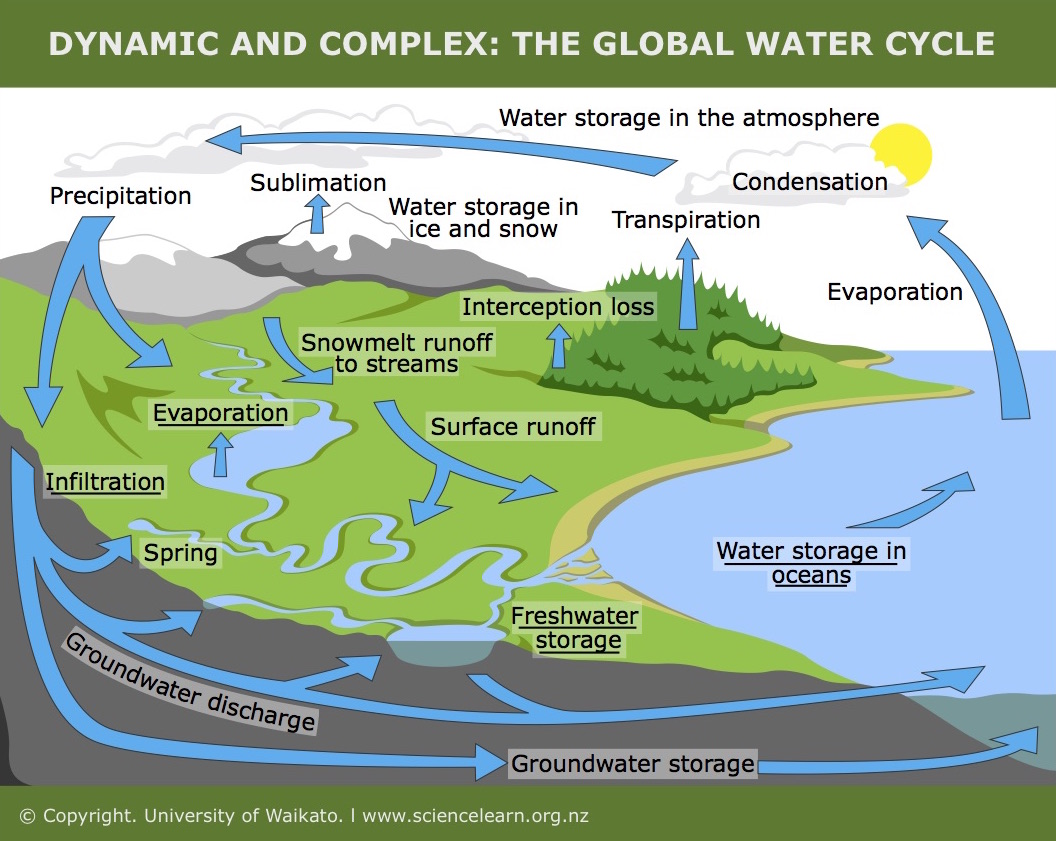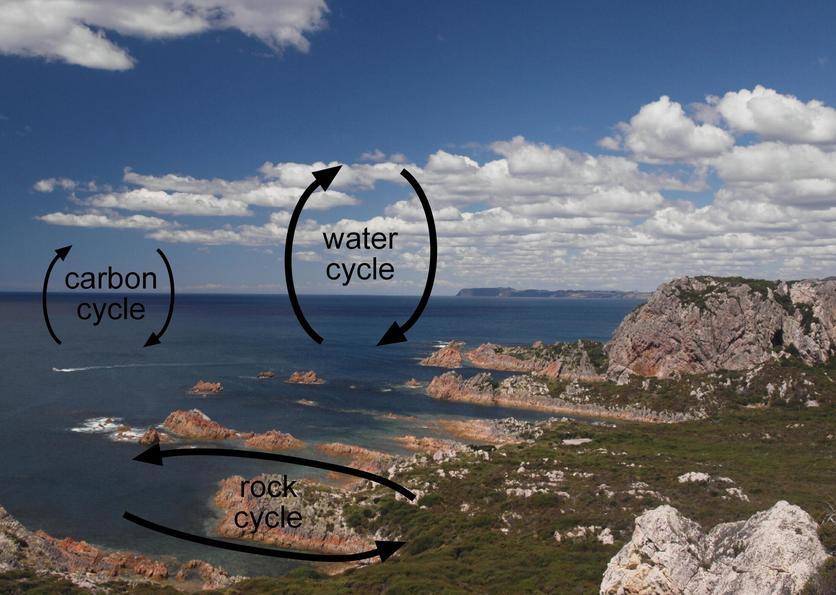The ocean plays an important part in several Earth systems and cycles. This is hardly surprising, as it covers two-thirds of the planet’s surface. It is difficult to study any of these systems and cycles separately, as they often overlap, but the ocean links them all. Here are some ways the ocean is involved in major Earth systems and cycles.
Hydrosphere
This system is made up of all the water on Earth, including water that is liquid, solid (ice and snow) or vapour (in the atmosphere). The ocean contains most of the water on the planet – far more than the freshwater in ice, lakes, rivers, groundwater and clouds.
Atmosphere
The atmosphere is the layer of gas around the planet that supports life and climate. There is a lot of movement between the ocean and atmosphere. Water is exchanged as part of the water cycle, and carbon dioxide is exchanged as part of the carbon cycle. In some places, the ocean gives up its heat to the atmosphere – in others, it takes up heat. This exchange helps form ocean currents that move energy around the planet and so control Earth’s climate.
Biosphere
The biosphere includes all living things and their environments. The sunlit upper part of the ocean supports vast food webs, from microscopic plants and animals in plankton to huge marine predators. Life also thrives in the dark ocean depths. The ocean supports this life because of the nutrients and warmth that it contains and circulates.
Geosphere
There is a lot of exchange of material between the ocean and the geosphere – the land and rock of the Earth. The ocean takes material from the edge of the land through erosion, and rivers add material from inland. Vast amounts of sediments settle to the bottom of the ocean, and these eventually get turned into sedimentary rocks (see the rock cycle below).
Water cycle
Liquid water enters the ocean through rain, rivers and melting ice. Water vapour evaporates from the ocean into the atmosphere to form clouds. Every year, 300,000 cubic kilometres of water evaporates into the atmosphere. Much falls back into the ocean, but a third of it condenses and falls onto land as rain and snow.
Read The water cycle article to find out more.
Carbon cycle
The ocean is one of the main stores of carbon on Earth. Most of the carbon is obtained from the atmosphere as carbon dioxide. Chemical and biological processes in the upper ocean combine the carbon with other chemicals, and much of the resulting material (mostly calcium carbonate) ends up sinking into the ocean deeps. Here, the carbon cycle overlaps the rock cycle, as the carbonate sediments eventually get turned into sedimentary rocks.
Read The ocean and the carbon cycle article and then explore our Carbon cycle interactive diagram to learn more.
Rock cycle
The ocean continually batters the edge of the land, eroding it, breaking down the rock and transporting it out to sea. Chemical and biological processes in the ocean also ensure that there is a build-up of sediment at the bottom of the ocean. Over millions of years, these sediments are physically and chemically changed into sedimentary rock. Movements of the Earth’s crust eventually raise these rocks to form land, which is gradually eroded back into the ocean, and the cycle continues.
Related content
Explore further Māori insight – māramatanga Māori – related to climate and Earth systems.


